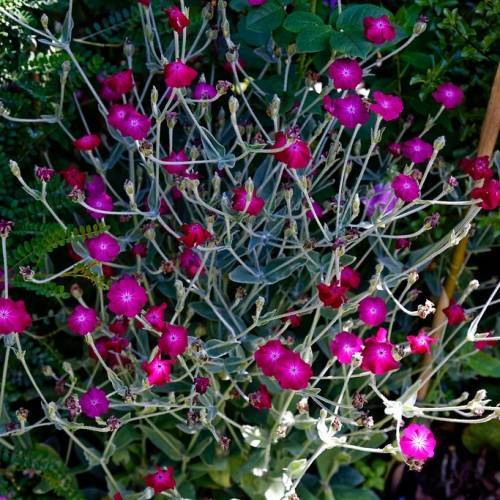
catchfly
Silene Coronaria
Cycle:
Herbaceous Perennial
Watering:
Minimum
Hardiness Zone:
4 - 8
Flowers:
Flowers
Sun:
Full sun
Leaf:
Yes
Growth Rate:
Low
Maintenance:
Low
Drought Tolerant:
Yes
Care Level:
Medium
watering
Catchfly (Lychnis coronaria) should be watered well once a week, or twice a week in dry periods or in particularly hot climates. The soil should be kept moist but not soggy, so ensure water has drained off properly after applying it. During the summer, water generously, soaking the soil thoroughly, but reduce watering in the winter. If planted in the ground, mulching will help retain soil moisture. Watering plants in the evening or night is not recommended as it can promote fungal diseases.
sunlight
Catchfly (Lychnis coronaria) grows best in full sun and requires direct, unfiltered light for at least 8 hours per day. The best time for this plant species to receive the most sunlight is from 10 am until 6 pm. It can handle a bit of shade during the hottest parts of the day (between 2 pm and 4 pm) but shouldn’t be left to receive no direct sunlight during the other hours of the day. While not necessary, catchfly can also benefit from a bit of morning light in order to get a jump start on the day.
pruning
Catchfly (Lychnis coronaria) should be pruned in the late spring or early summer, after flowering has finished. Prune by cutting back old stalks to the basal rosette of leaves to promote healthy new growth. Bigger pruning may be needed annually, such as removal of any dead or damaged stems which will help reduce the risk of disease and encourage a flush of new growth. In the second year after planting, the catchfly can be cutback to half its size after flowering.
